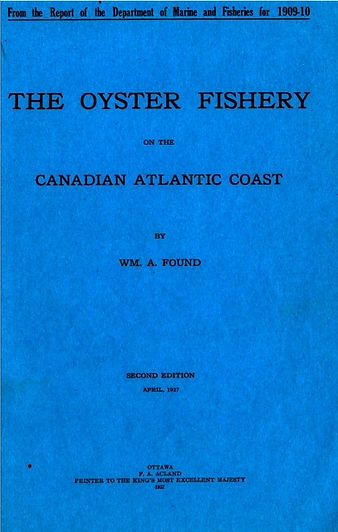ABOUT THE OYSTER AND ITS LIFECYCLE




Oysters are among the most nutritionally dense creatures on our planet and are a completely sustainable food source requiring nothing but the natural environment in which they reside. An excellent source of protein, Vitamin D, Zinc, Iron and Vitamin B12. Despite that, they are still one of the great polarizing citizens of the sea! Whatever your feeling is toward this marvellous mollusk, here are a few points of interest: Oysters live in river mouths and shallow bays worldwide. They require an estuary environment where fresh and saline water meet, just the right balance of nutrients, temperature and biological magic. This water is referred to as brackish. They begin their life as tiny seeds and depending on species, environment, and market requirements, they typically take 2-4 years to develop fully. In Canada, oysters are either wild-caught or cultivated by our dedicated oyster communities of Atlantic Canada and the Pacific Northwest.
oyster seasonality
Once upon a time, a scientifically backed case made oysters less desirable in the summer months: otherwise known as the "R" rule. Oysters enter their spawning cycle during the warmer summer months. As a result, the oyster can become thin, watery, soft and less flavorful. Advancements and creativity in reproduction cycles and cultivation have made these concerns outdated. A carefully selected oyster can be enjoyed in a variety of ways all year long.
our oyster offerings
Our oysters come from a variety of sources throughout the year. For instance, we select and work with growers committed to harvesting a product that thrives in the warmer months, our busy summer season. Merasheen Bay, NL, is the coldest oyster growing region in North America and a great example of the innovation at play in our industry. Cascumpec Bay Oyster Co in Coleman, PEI, does a terrific, creative job producing warmer water oysters. Affectionately referred to as "Cascy's," they anchor our oyster program. Each season brings unique weather patterns and environmental conditions, so we work with our partners to make the best possible selection based on seasonal quality and availability.

species of oysters
There are five oyster species worldwide, with over 150 varieties grown in North America. While each species has a genetic disposition to taste, texture and shape, their final flavour profile is heavily influenced by the waters where they grow. Like the taste difference between Chardonnays from Niagara and Napa Valley, oysters are influenced by the "merroir" (the terroir of the ocean).
The five species of Oysters are as follows:
1
Crassostrea Virginica
With teardrop or paisley shapes, smooth shells and uniform colours of forest greens to brown, the Virginica can be found in the bays and estuaries of our Atlantic seaboard. Briny and saline, an all-around terrific oyster.
2
Crassostrea gigas
Gigas shells have naturally ruffled edges as they are not "tumbled" like the Virginica, allowing the movement of the Pacific Ocean to beautifully sculpt their surfaces. Most commonly cultivated on the Pacific coast of North America, the Gigas were brought to the Pacific Northwest from the Asia Pacific in the early 1900s. They tend to have a sweeter and less briny taste than their Atlantic cousins and offer a broad spectrum of flavours.
3
Crassostrea sikamea
Known the world over as the Kumamoto. Arriving from Japan in 1947, the Sikamea quickly became commonly referred to as the Kumamoto Oyster. A small slow growing oyster with deep cups and striking shells. Creamy and buttery in texture with a nutty, cucumber-like flavour.
4
Ostrea Lurida
Smallest of all the species, they tend to be fragile and complicated to grow, often taking up to 4 years to reach the size of a quarter. Despite their challenges, they can be highly flavorful with notes of sweet celery and complex minerality.
5
ostrea edulis
Commonly referred to as European Flats and frequently called Belons. They can only be called Belons if they are from the Brittany region of France near the Belon River. A shallow cup and a flat lid with a distinguishing seaweed green colour. Not for the faint of heart, this species boasts the boldest flavour of all the species with a meaty, crunchy texture followed by a mineral bite and pungent seaweed-like finish. The wild game of the oyster.
a little oyster history

Oyster Man is a 17-minute film by Julian Biggs and Jean Palardy. It is an introduction to oyster farming in the Gulf of St. Lawrence. It offers a mid-century glimpse at how to open an oyster and how the oyster is farmed. Little has changed since this film was made in 1951. Click below for a link to this NFB gem of a movie.
what you need to know


lobster true and false
Big lobsters are tougher
FALSE
Poorly cooked lobsters are tougher, that's for sure. A larger lobster may be slightly more stringy, but it will be flavorful and tender if cooked well. I like a two pounder for yield and cooking consistency.
Hardshell lobsters are best
true
The harder the shell, the less moisture is retained in the muscle. A fuller, better bang for the buck lobster as a result!
boiling lobsters
is inhumane
true or false
Not taking a position on this one. The fact is all animals feel pain in a very brief moment before slaughter. With the right amount of boiling water, a quick hand will make this process quick and easy for all.

“As I ate the oysters with their strong taste of the sea and their faint metallic taste that the cold white wine washed away, leaving only the sea taste and the succulent texture, and as I drank their cold liquid from each shell and washed it down with the crisp taste of the wine, I lost the empty feeling and began to be happy and to make plans.”
Ernest Hemingway, A Moveable Feast






